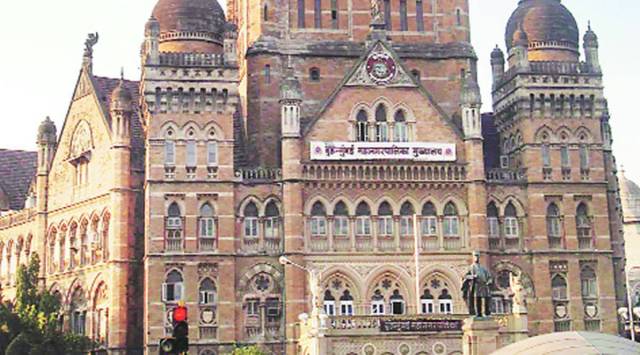BMC to apply Geopolymer coating on walls of dilapidated drains to ensure seeping water does not damage roads
Mumbai currently has a 36-km-long labyrinth network of arch-drains underneath the surface of island city. Some of them are horse-shoe shaped and constructed on the masonry model, which includes the use of bricks and stones.
 In 2015, the BMC had replaced arch drains on Pedder Road, after a road cave in in 2012 led to massive traffic disruption in south Mumbai.
In 2015, the BMC had replaced arch drains on Pedder Road, after a road cave in in 2012 led to massive traffic disruption in south Mumbai. To prevent water seepage from the century-old arch-shaped storm water drains in south Mumbai, the BMC is set to implement a Geopolymer coating on the walls of the drains to ensure that the water does not seep through them and damage roads.
Mumbai currently has a 36-km-long labyrinth network of arch-drains underneath the surface of island city. Some of them are horse-shoe shaped and constructed on the masonry model, which includes the use of bricks and stones.
These drains were constructed during the erstwhile British era and could be found only in the island city, since during the 18th and 19th centuries, the suburban belt of the city was not fit for human habitation.
Since all these drains are in a dilapidated condition, the BMC in February 2022 had initiated a survey to assess their structural condition. According to civic officials, the maintenance of these drains are of utmost priority, else roads could cave in.
The BMC has floated a Rs 415-crore tender for regular maintenance of these drains. Officials said that to prevent seepage from the drain walls, the BMC will use the Geopolymer Lining (GL) technology – apply a chemical-based lining on the corroded walls to prevent water leak.
“The primary objective is to avoid digging and trenching of the road surface. All these drains are either arch-shaped or horse-shoe shaped and therefore, the coating will be applied on the existing walls. These drains are over 100 years old and therefore, all the walls have become corroded,” P Velrasu, additional municipal commissioner (Projects), said.
At present, these repairs will be taken up at 27 locations having arch and horse-shoe shaped drains in a 14-km stretch from A ward (Churchgate, Colaba) in extreme south of Mumbai to G North (Dadar, Matunga) in central Mumbai. The areas include Mint Junction, P D Mello Road, Shimla House and Senapati Bapat Marg.
Velrasu said the project has been approved by the Indian Institute of Technology, Bombay. “Another benefit will be that the polymer coating will make the surface of the drains smooth and ensure uninterrupted flow of water,” he added.
The tender document for the project stated that besides implementing the GL technology, the contractor will also be responsible for five-year maintenance of these drains, including desilting works to be carried out during monsoon.
In 2015, the BMC had replaced arch drains on Pedder Road, after a road cave in in 2012 led to massive traffic disruption in south Mumbai.
Mumbai has a 70-km-long network of British era drains, of which 36 km comprise arch drains and 34 km pipe drains.








